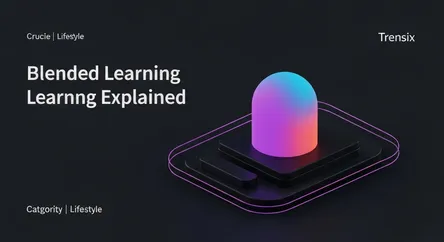Lifestyle
Blended Learning Explained

Discover blended learning, the educational model mixing online digital media with traditional classroom methods. Learn why this hybrid approach is trending.
What is it?
Blended learning, also known as hybrid learning, is an educational approach that strategically combines traditional face-to-face classroom instruction with online learning activities. Instead of solely relying on one method, it integrates the two to create a cohesive learning experience. Students might attend in-person lectures and labs but also engage with digital course materials, online discussions, or virtual assignments from home. The core idea is to leverage the strengths of both environments, using technology to supplement and enhance the learning process, not just replace the teacher.
Why is it trending?
The rise of blended learning has been accelerated by advancements in educational technology and a global shift towards more flexible work and study arrangements, particularly following the COVID-19 pandemic. It offers the 'best of both worlds': the social interaction and direct support of a physical classroom combined with the convenience and self-paced nature of online learning. Schools and universities are adopting this model to cater to diverse student needs, improve engagement, and make education more accessible and scalable for a modern, digitally-native generation.
How does it affect people?
For students, blended learning can foster greater autonomy and responsibility for their own education, allowing them to learn at their own pace and revisit complex topics online. It often leads to increased engagement as it incorporates interactive digital tools. For educators, the role shifts from a traditional lecturer to more of a facilitator or guide, focusing on providing personalized support. However, it also presents challenges, such as the need for robust digital infrastructure, proper teacher training, and ensuring equitable access to technology for all students to avoid a digital divide.